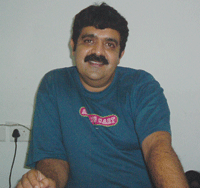
One obvious way in which the existing education system preserves social inequality is through the rigidly hierarchical ordering of educational institutions, stretching from the primary to the highest level, with different categories of institutions catering to students from distinct socio-economic classes. Expensive English-medium schools and colleges are ranked at the top of the hierarchy, and vernacular ones at the bottom. The former cater to students from rich families; the latter to the lower-middle class and the poor. Since well-paid jobs inevitably demand good English, students from the latter sort of schools stand little or no chance at all of obtaining them. Such jobs are, for all practical purposes, reserved for graduates of expensive, English-medium institutions, from which students from poor families are effectively barred admission because of their inability to pay and their lack of what is considered the appropriate ‘cultural capital’. This is how the language-based hierarchical ordering of schools functions as a principal means of perpetuating socio-economic inequality. It works to train students from rich families for well-paid careers in the future, while consigning the rest to low-paid jobs or else to unemployment.
In the face of the well-entrenched hegemony of English (notwithstanding piously-sounding political appeals to take pride in indigenous languages), students from economically well-off families, where English is, for all practical purposes, the mother tongue, have a tremendous advantage, at the very start itself, over other students. They are spared the agony of struggling to learn a language other than the one they speak at home. For students from poorer families, whose parents may know no English at all, excelling in an alien tongue that is projected as the key to academic ‘success’ is an uphill task, which few are able to accomplish. In many cases, even bright students from such families are treated as ‘failures’ and are forced to drop out of school simply because of their difficulty in mastering a language that is not their own. On the other hand, even mediocre students from homes where English is spoken may sail through the education system simply because of their familiarity with the language. Given the strong link between fluency in English (and with the ‘right’ accent and mannerisms), academic ‘excellence’ and ‘top’ jobs, as long as the linguistic divide—between the English-speaking minority and the rest—continues to exist in the schooling system and in Indian society at large, all talk of education as a means for the democratization of society seems just so much hog-wash.
Another way in which the education system, as presently structured, clearly reinforces existing social and economic hierarchies is through its privileging of mental over physical labour. This works to the advantage of children from richer families, who don’t need to engage in any physical work to help sustain their families. Their families may have a long tradition, spanning several generations, of literary attainment, which gives them a major advantage over students from poor families that lack such a tradition. The present education system denigrates physical labour, and regards the many skills of students who engage in such labour to supplement their family incomes to be of no value in terms of what the system considers as ‘real education’—which it reduces simply to the memorization of pre-packaged bits of information. The cultural ethos of contemporary schooling engendered by a misplaced stress on ‘intellectual’ learning and hostility to physical labour thus clearly works to the advantage of students from economically better-off families.
Numerous researchers have also uncovered a subtle class bias which pervades the contents of textbooks used in ‘mainstream’ Indian textbooks. Typically, these books reflect the norms, values and expectations of dominant social classes, and rigidly exclude those specific to the poor and other marginalized social groups. History books, for instance, glorify ‘great’ men from dominant communities—rulers, priests and politicians—while women, the poor, marginalized castes and tribes and communities living on the periphery of what is considered the ‘national heartland’ rarely find mentioned therein. In the teaching of literature, stories based on the life of the poor or marginalized communities are rarely included in the syllabus. Issues such as poverty, class- and caste-based marginalization and gender-discrimination are rarely dealt with at the school level. In these many ways, the curriculum of school education hardly reflects the real-world situation of children from non-privileged backgrounds—which is to say possibly the majority of all Indian students. Not surprisingly, then, such students often find the curriculum both alien as well as alienating, and this is one major reason for their overall poor performance in their studies. In contrast, since the curriculum reflects the value-system of dominant social groups, students from such backgrounds typically perform better.
If the present education system is thus fundamentally skewed in favour of elites, it can hardly be expected to work as a solvent of social inequality and poverty—in contrast to what many of us naively hope. The apartheid-like system of English-medium versus vernacular-medium schools, the privileging of mental over physical labour and the elite-bias of the school curriculum all combine to make contemporary education a major basis for the perpetuation of deeply-entrenched social hierarchies. Universalising education—a populist slogan today—can thus do precious little to undermine inequalities if these inconvenient factors continue to be conveniently ignored.




Comments
Add new comment